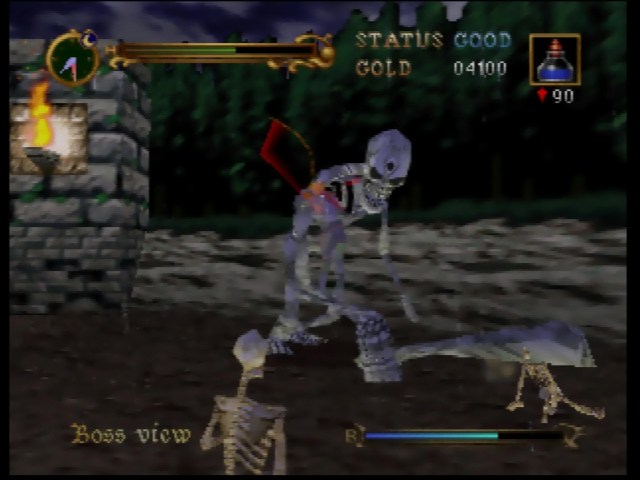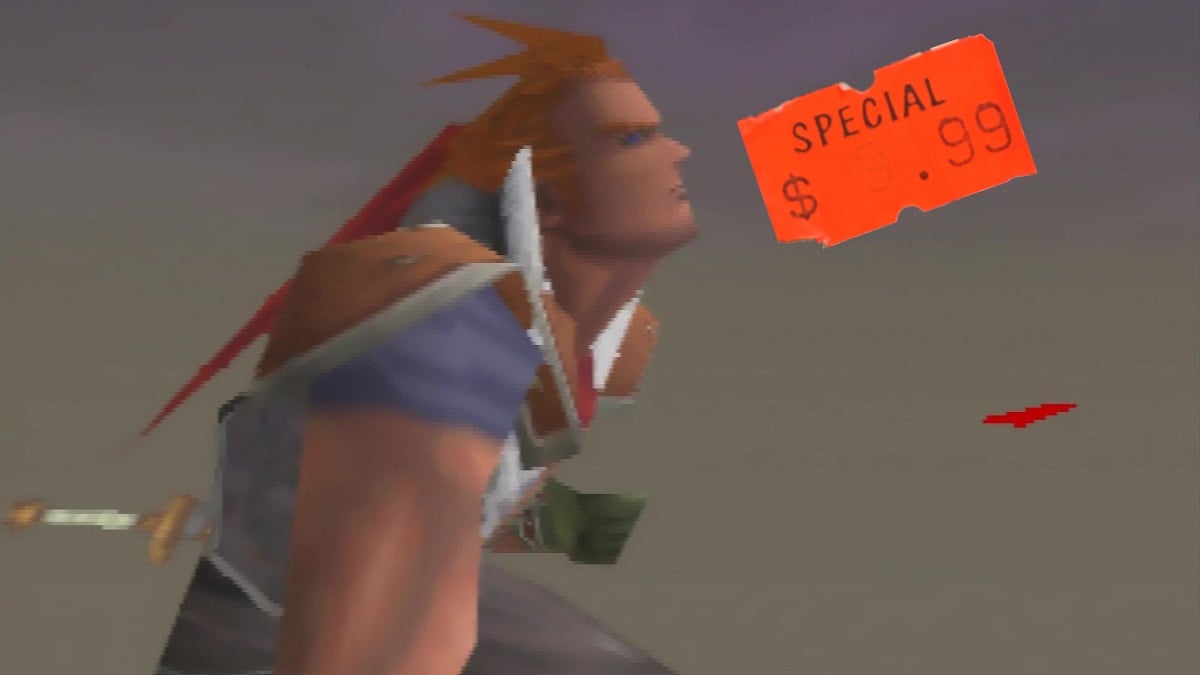Corridorvania
I’ve been playing through Castlevania: Curse of Darkness, because despite not really liking Castlevania: Lament of Innocence, people have told me that it’s the more tolerable of the 3D Castlevania titles. I’m still waiting to get to the part that makes people say that because, so far, it’s smolderingly boring. Just a bunch of long corridors with dudes in them.
I’d argue that Castlevania has never really found its footing in 3D. Fans of Castlevania: Lords of Shadow might be raising their eyebrows right now, but I found that game as flavorful as dry bread made of drywall shavings.
As reviled as the N64 Castlevania titles sometimes are, at least they weren’t boring. I’m not here to make the claim that they were good games, but buried beneath all of that kusoge is a heart of… well, not gold. Ice cream, maybe? It tries, at least. And it’s better to try and fail than it is to try and bore me to unconsciousness.

Music of Sad
While often referred to as Castlevania 64, the first title in the N64’s duology is, in fact, just called Castlevania. In Japan, its title translates roughly to Castlevania: Apocalypse, which is just wonderfully generic. Released in 1999, it came out in the shadow of the seminal Symphony of the Night. It was before Koji Igarashi had a stranglehold on the series, so a lot was still up in the air. Naming, for example, hadn’t yet settled into its “Music of Sad” categorization yet.
The story doesn’t really deviate from the typical setup. You play as either the current Vampire Killer whip holder, Reinhardt Schneider, or heir to the Belnades magic, Carrie Fernandez. Dracula has awoken again, and they need to put him back to sleep. I can’t say I ever played a Castlevania title for its story, so big shrug here.
The Japanese version refers to it as “Real Action Adventure,” which is a bit of an amusing description since “action adventure” is such a nebulous term. It plays like a lot of games of its era. The late ‘90s were pockmarked by games that just couldn’t get a handle on 3D, and Castlevania on N64 was certainly a prime example of this.

Real Action Adventure
While Symphony of the Night shunted the series into a more gated exploration direction, Castlevania 64 tries something different. It’s more or less a linear platformer like the early titles, but with all the width, height, and depth of a 3D game. It plays a bit similarly to Mystical Ninja Starring Goemon, but while that game was sort of free-roaming, Castlevania 64 was, as stated, largely linear.
It seems like there was some ambition to make it less direct, as the mansion level involves some exploration, but that’s sort of the only deviation. There’s a day/night cycle, but this is only important a few times throughout the game and forgotten about for huge swathes of gameplay. There’s even a single moment where you need to be somewhere at a specific time of day in order to proceed in the game, but this is literally the only time. Thankfully.

Trust issues
The biggest issues of Castlevania 64 are the controls and the camera, both problems that were common in games of the time. The movement is rather erratic and slippery. The combat relies on targeting, where you mostly don’t have an influence on what it latches onto. You can solidify what it grabs by holding R, but then you can’t move unless you press the jump button to dodge. But since the auto-aim is so aggressive, you can get away with just running around and attacking wildly. Carey has homing magic, which is usually just a matter of fire and forget, but Reinhardt has a more direct whip. The trade-off is that Reinhardt is more responsive, and, well, he actually requires positioning beyond just letting loose attacks.
The platforming is more-or-less fine. If you hold the jump button down, your character will grab onto ledges, which is generally reliable. The only problem is that this is a system that very few games subscribed to, so remembering not to release the button takes some getting used to.
Both traversal and combat are largely hampered by the camera. While both gameplay systems are functional, they both rely on being able to see what you’re climbing on or attacking. You have no direct control over where it’s pointed. That’s not entirely true. You can use the R button to move the perspective back behind your character if it wants to. A lot of the time, it will stay locked in place, and you just have to kind of trust that it won’t let you down when you need it. That trust is very undeserved.
The levels aren’t particularly designed to alleviate frustrations caused by this. There is a ridiculous amount of instant death, and the save points are hardly generous. It’s bad enough that it’s very easy to misjudge a jump because the camera isn’t cooperating, but it’s worse when it sets you back to a distant save point.

Chainsaw Man
Likewise, there’s a strange reliance on grapple enemies. This becomes an issue early on when you’re running through a hedge maze, trying to escape two indestructible dogs and a hulking gardener with a chainsaw arm. The dogs will grab you, and then the chainsaw guy will chainsaw you. I think this part stands out to me as particularly frustrating, mainly because the save point is just so far back. It’s not a fun walk back to the maze just so you can get chainsawed again.
However, you may hear some speak fondly of Castlevania 64, and that’s mainly because of how well it nails the aesthetic. It’s not completely true to the classic side-scrollers because it does have you navigate many rather empty areas, but it manages to maintain a decent amount of gothic spookiness. There is the aforementioned chainsaw gardener and motorcycles that seem out of place in a story set in the late 1800s, but Castlevania has rarely been about historical accuracy.
The music is rather sparse but pretty decent where it appears. Notably, the game opens with a slowed-down version of Divine Bloodlines that sounds enjoyably moody. Most of the music throughout the game, however, is rather atmospheric, which is quite the contrast compared to other titles in the series. Most Castlevania soundtracks are more akin to how someone would score the spectacle of a sex doll being torn apart by wolves as it falls down an elevator shaft.

Moldy cheese
Someone once said to me that for its 3D titles, Castlevania should have taken cues from Metroid Prime. While Castlevania 64 was a few years to early to be influenced by that game, I think it’s still a valid hope for the formula. On the other hand, if Konami were to take a crack at a 3D Castlevania now, I think it would be better off taking influence from Batman: Arkham Asylum. Punchy combat and exploration, moody environments, but maybe with a smidge more platforming.
Castlevania 64 would be followed the next year by Castlevania: Legacy of Darkness. It’s a weird title that addresses a lot of this game’s issues, includes a couple of extra adventures, but then completely remakes the story mode of Castlevania 64. It’s a bit of a weird thing that almost renders its predecessor obsolete, but maybe it goes a bit far at remaking some stuff. I’ll give it another playthrough and report back.
As for Castlevania 64, current culture is a bit too obsessed with something being either really awful or spectacularly brilliant for it to have any value. It should be perfectly acceptable to like something that is merely okay. A video game isn’t like a diamond, where its value declines with every imperfection. It’s more like cheese, where sometimes the mold is part of the experience. Castlevania 64 is moldy cheese. It’s a bit stinky, but it’s better than the flavorless plastics that came after.
For previous Weekly Kusoge, check this link!






Published: Apr 17, 2023 05:00 pm